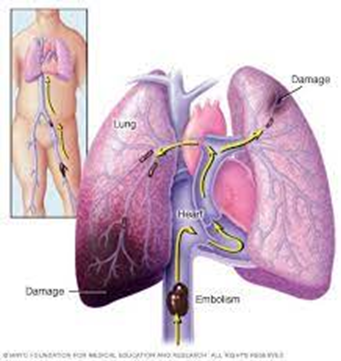A nurse is caring for a client who has a spinal cord injury at the fourth cervical level. Which of the following mobility options should the nurse anticipate for this client?
Manual wheelchair
Sip-and-puff device
Drive-adapted wheelchair
Ultra-light wheelchairs
The Correct Answer is B
Choice A Reason:
Manual wheelchair is inappropriate. A manual wheelchair requires the use of the client's upper extremities to propel the wheelchair forward by pushing on the wheels. With a spinal cord injury at the fourth cervical level, the client may have limited or no function in their upper extremities, making it difficult to self-propel a manual wheelchair.
Choice B Reason:
Sip-and-puff device is appropriate. A sip-and-puff device allows individuals with limited or no hand function to control a powered wheelchair using their breath. This device enables the client to navigate the wheelchair by inhaling or exhaling into a straw-like device, which activates controls to move the wheelchair forward, backward, and turn.
Choice C Reason:
Drive-adapted wheelchair is inappropriate. A drive-adapted wheelchair is a powered wheelchair that can be modified with adaptive controls to accommodate individuals with limited hand function or mobility. These wheelchairs may include joystick controls, head arrays, chin controls, or other adaptive devices that allow the client to operate the wheelchair independently despite limited hand function.
Choice D Reason:
Ultra-light wheelchairs is inappropriate. Ultra-light wheelchairs are manual wheelchairs that are lightweight and often customized to fit the client's specific needs and preferences. While ultra-light wheelchairs may offer advantages in terms of maneuverability and ease of transportation, they still require sufficient upper extremity function to self-propel the wheelchair.
Nursing Test Bank
Naxlex Comprehensive Predictor Exams
Related Questions
Correct Answer is ["A","B","E"]
Explanation
Choice A Reason:
Encouraging the client to walk regularly is appropriate. Regular exercise, including walking, can help improve mobility, balance, and overall physical function in individuals with Parkinson's disease. It can also help alleviate symptoms such as stiffness and tremors.
Choice B Reason:
Providing the client with fresh fruits and vegetables is appropriate. A healthy diet rich in fresh fruits and vegetables provides essential nutrients, antioxidants, and fiber, which can support overall health and well-being. While diet alone does not directly treat Parkinson's disease, maintaining a nutritious diet is important for overall health.
Choice C Reason:
Restricting fluids to 800 mL/day is inappropriate. Fluid restriction is not typically indicated for individuals with Parkinson's disease unless they have a specific medical condition such as heart failure or kidney disease, which may require fluid restriction as part of their management plan. Restricting fluids excessively can lead to dehydration, which can worsen symptoms such as fatigue, confusion, and constipation, common in Parkinson's disease. Adequate hydration is important for overall health and well-being, including maintaining proper kidney function and preventing urinary tract infections, which individuals with Parkinson's disease may be susceptible to due to urinary retention issues.
Choice D Reason:
Minimizing exposure to outside activities is inappropriate. While it's important for individuals with Parkinson's disease to take precautions to avoid falls and injuries, completely restricting exposure to outside activities is not necessary or advisable. Physical activity, social engagement, and exposure to sunlight are beneficial for both physical and mental health. Encouraging individuals with Parkinson's disease to remain engaged in activities they enjoy, with appropriate safety measures in place, can help maintain their quality of life and overall well-being.
Choice E Reason:
Teaching the client how to use a walker is inappropriate. Assistive devices such as walkers can help individuals with Parkinson's disease maintain mobility and independence, especially if they experience gait disturbances or balance problems. Teaching the client how to use a walker safely and effectively can enhance their quality of life and reduce the risk of falls.
Correct Answer is D
Explanation
Correct answer: D
Choice A Reason:
Decreased pulmonary vascular resistance is incorrect. Inflammatory mediators released in response to a pulmonary embolism can lead to vasoconstriction and increased pulmonary vascular resistance. This is part of the body's response to redirect blood flow away from the affected area of the lung and maintain adequate perfusion to other areas.
Choice B Reason:
Hypercapnia is incorrect. Hypercapnia refers to elevated levels of carbon dioxide (CO2) in the blood.Hypocapnia usually is present with embolism; hypercapnia, on the other hand, is rare.
Choice C Reason:
Hypoventilation is incorrect. Hypoventilation occurs when there is inadequate ventilation of the lungs relative to metabolic demands. In the context of a pulmonary embolism, hypoventilation can occur due to factors such as pain, respiratory muscle fatigue, or impaired gas exchange, all of which can be influenced by the release of inflammatory mediators.
Choice D Reason:
Respiratory alkalosis is correct.In response to the blockage and the resulting inflammation, the body often increases the respiratory rate as a compensatory mechanism to maintain adequate oxygen levels and remove carbon dioxide.Due to the increased breathing rate, there is excessive exhalation of carbon dioxide, leading to a decrease in the partial pressure of CO2 in the blood. This results in an increase in blood pH, causing respiratory alkalosis.

Whether you are a student looking to ace your exams or a practicing nurse seeking to enhance your expertise , our nursing education contents will empower you with the confidence and competence to make a difference in the lives of patients and become a respected leader in the healthcare field.
Visit Naxlex, invest in your future and unlock endless possibilities with our unparalleled nursing education contents today
Report Wrong Answer on the Current Question
Do you disagree with the answer? If yes, what is your expected answer? Explain.
Kindly be descriptive with the issue you are facing.
